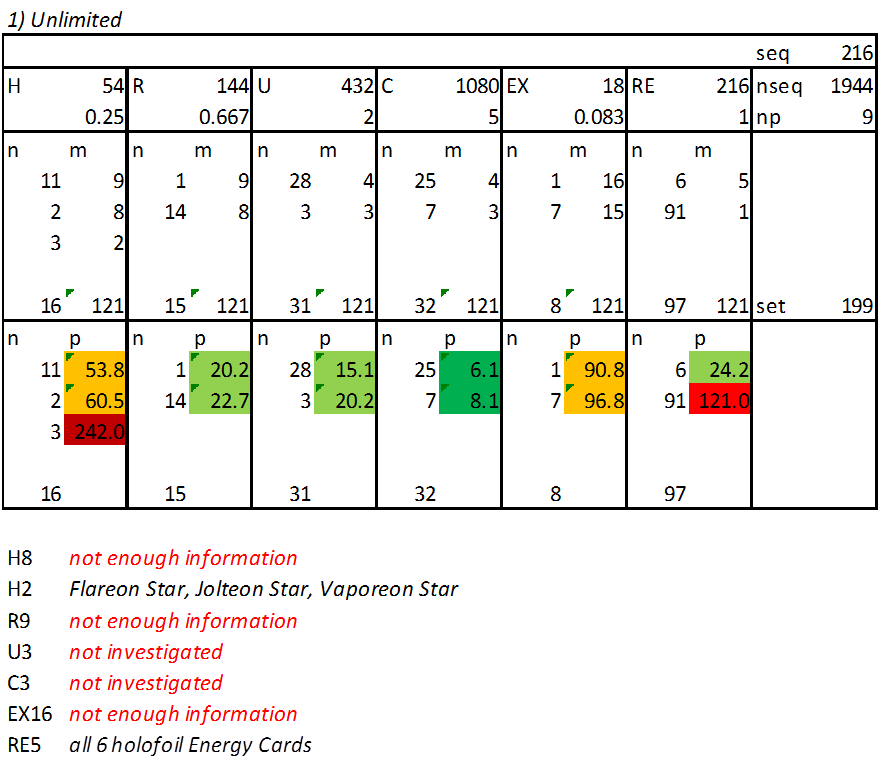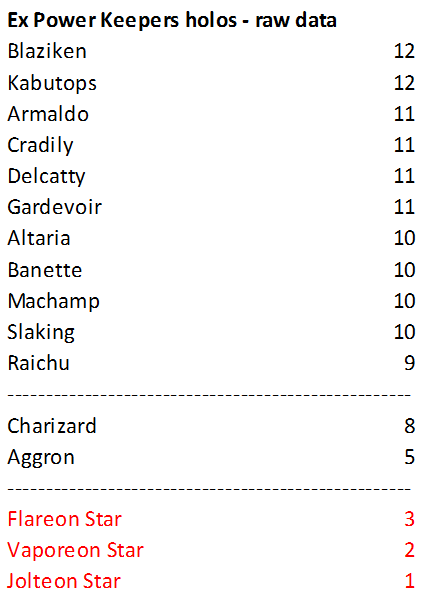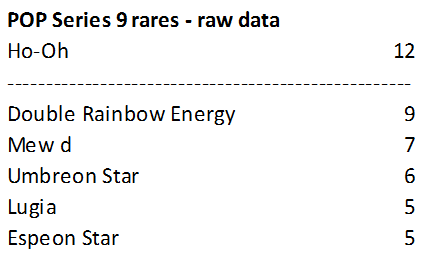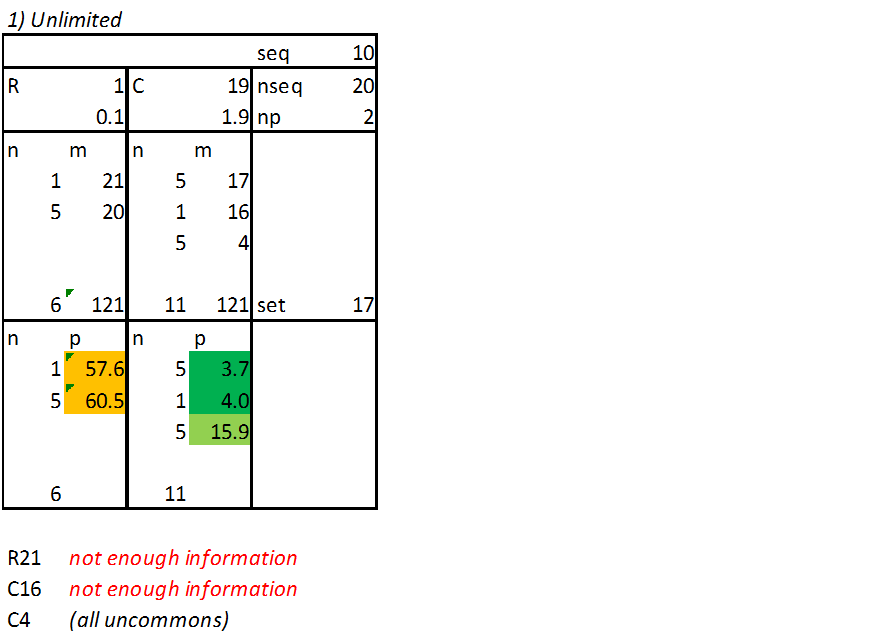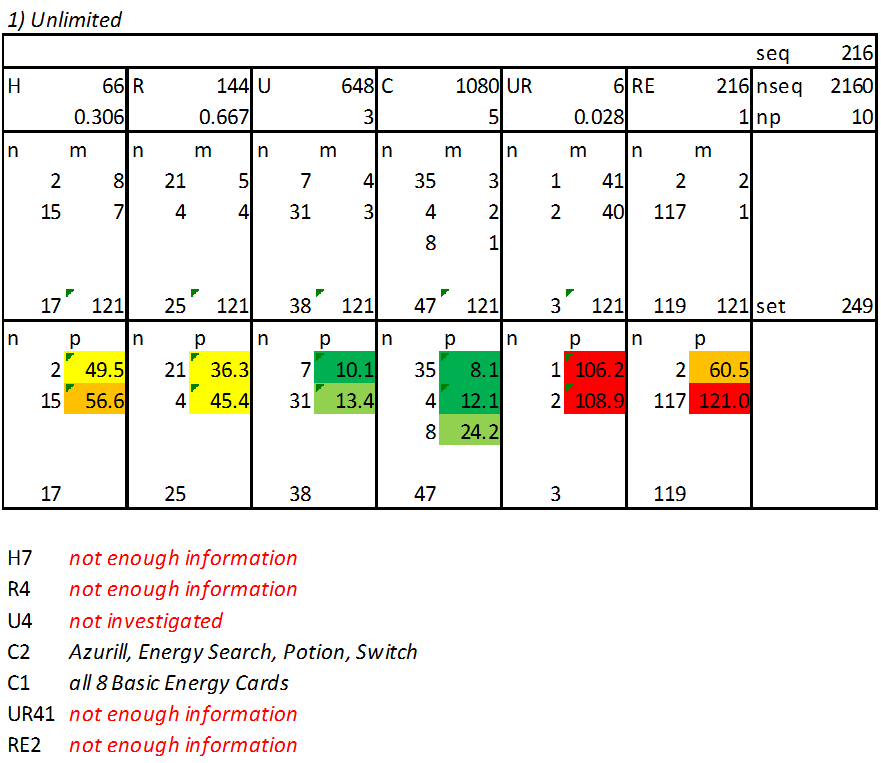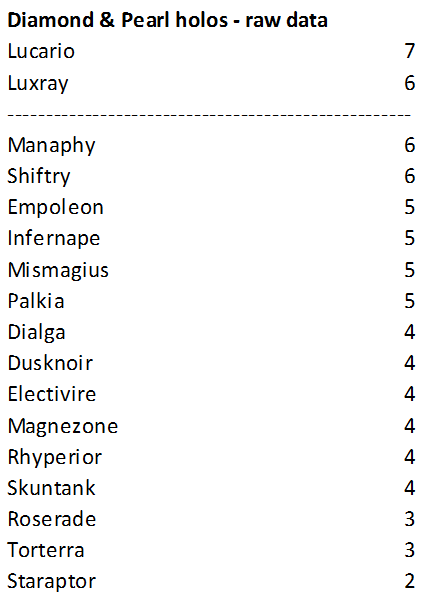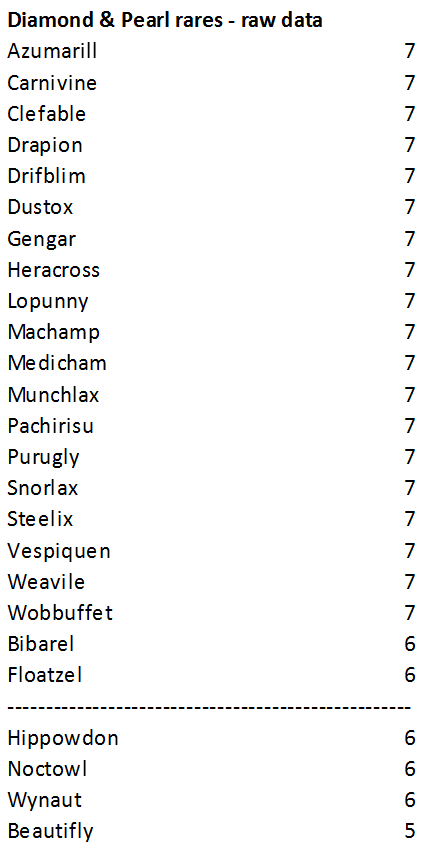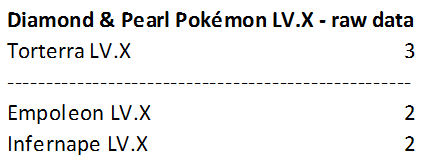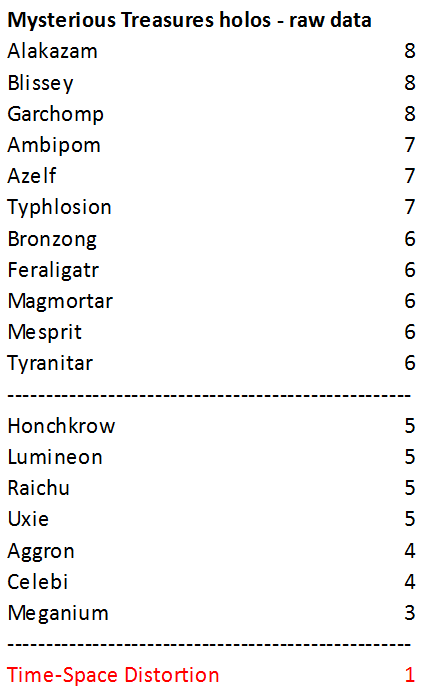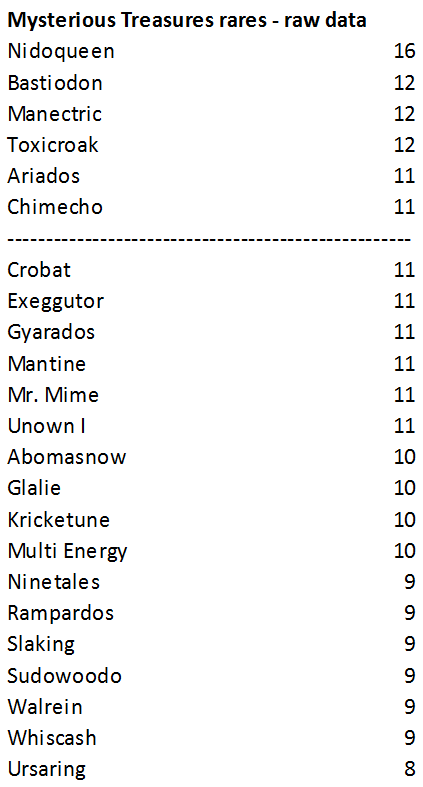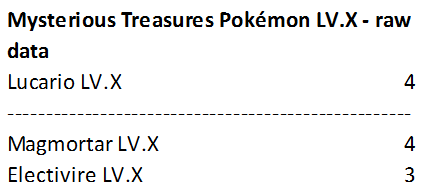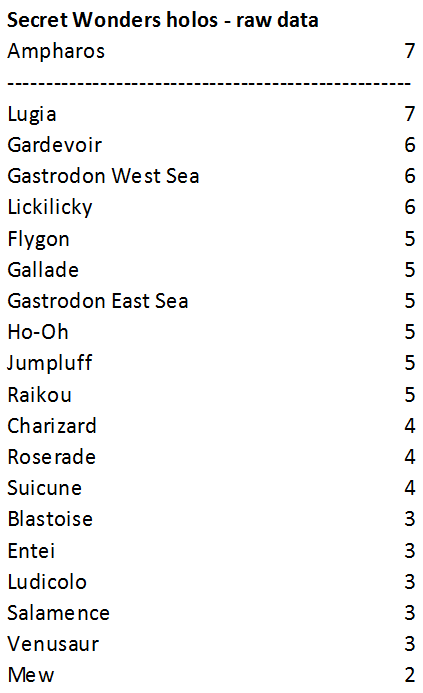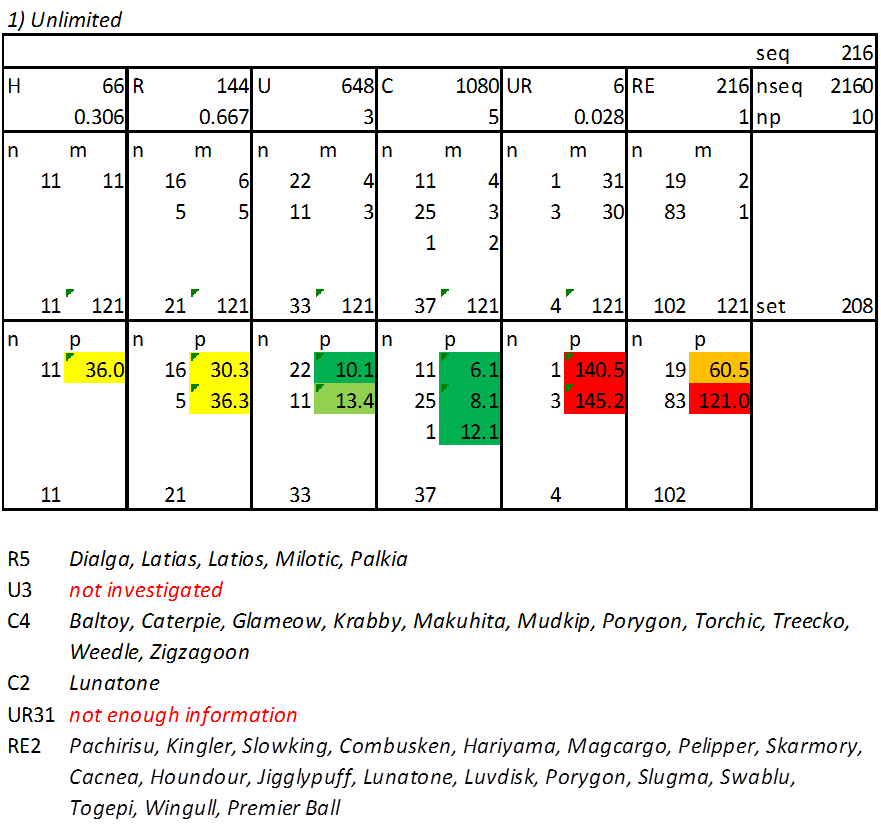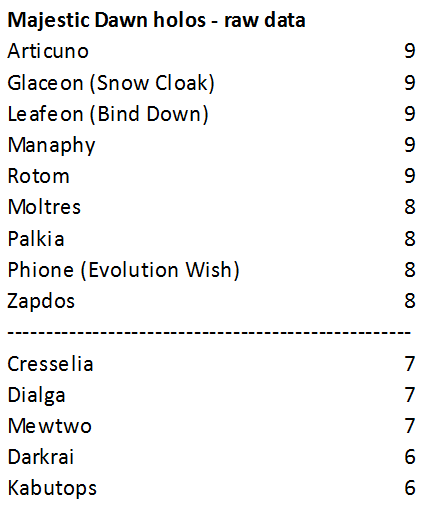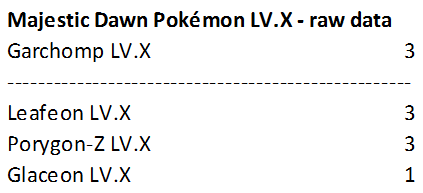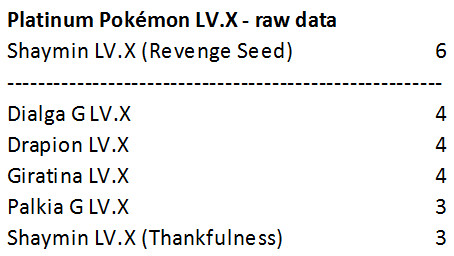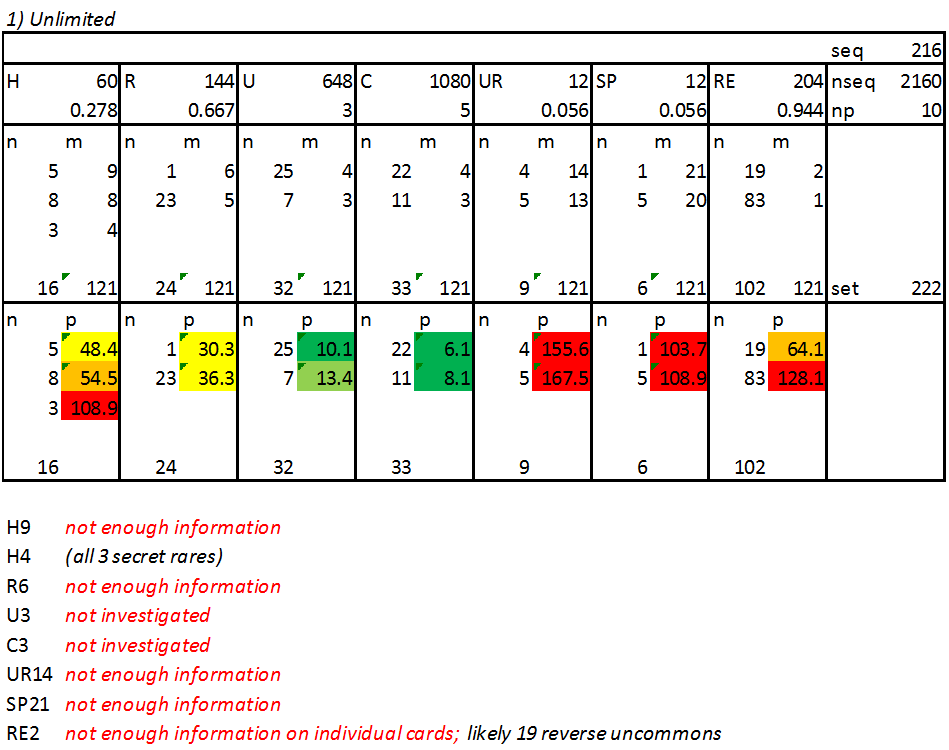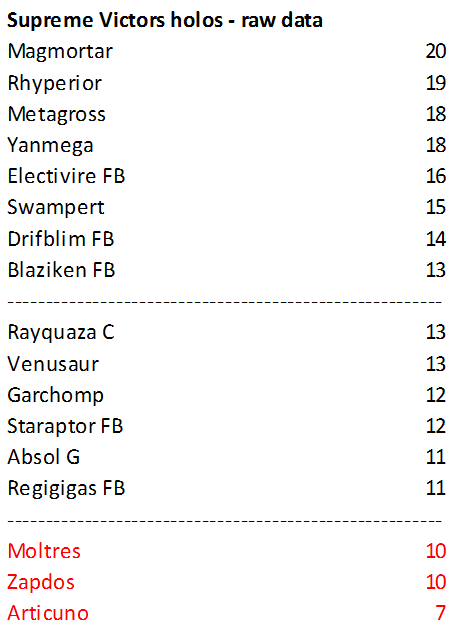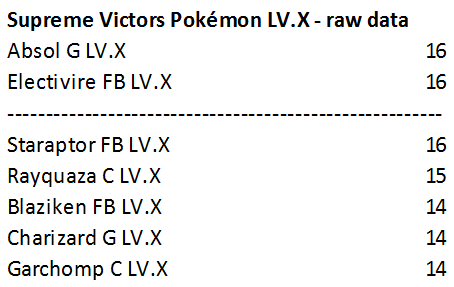Ex Power Keepers
This set concludes the Ex Series as far as main sets go. The set contains Pokémon-ex, Gold Stars and holofoil Energy Cards, the latter coming in the reverse slot. It seems they were printed 5 times each on the same sheet as the 91 reverses, making up a 121 card sheet, with the holofoil Energy Cards appearing approximately 1 in every 4 packs. The table below compares the observed data with this hypothesis; I can’t come up with any other one which would even remotely fit the data:
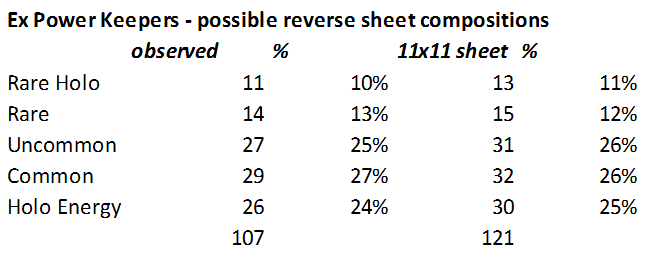
Since the holos/Gold Stars seem to have already been printed on a 121 card sheet for the last set, my working hypothesis from now on will be that all sheets, rather holofoil or not, will feature 121 cards, at least until we arrive at ultra-rare cards where parts of the illustration reach all the way to the card border. For these, 100 card (10x10) sheets seem to be used in some cases (see the video New Footage of Pokemon Cards Being Designed, Printed, Packaged & Shipped - YouTube at around 10 minutes showing Pokémon GX from Forbidden Light).
Both my own data as well as that provided on the Pokegym forums (PK EX/Stars Per Box | The PokeGym) points to the Pokémon-ex being 3 per box in this set. As to the Gold Stars, things are a bit more difficult to say. I observed 6 Gold Stars pulled from 15 boxes (I came across one more video on Youtube since my introductory post on the Gold Stars), but 4 of them came from one single box, meaning 12 of of 15 boxes contained none. The reported pulls on the Pokegym forums were about 1 Gold Star in 2 boxes. Based on this, I think the best guess is that the Gold Stars are printed on the same sheet as the holos, with each one (Flareon, Jolteon and Vaporeon) appearing twice on the sheet, yielding 2 x 3 / 121 * 9 = 0.446 Gold Stars per box. Unless they were printed in such a way that multiple can routinely appear in the same box, the large share of boxes with no Gold Star I observed would be coincidence. The rarity table looks as follows:
The raw data for the holos, rares and Pokémon-ex looks as follows (dashed lines indicating where the transition from H9 to H8, etc., would occur):
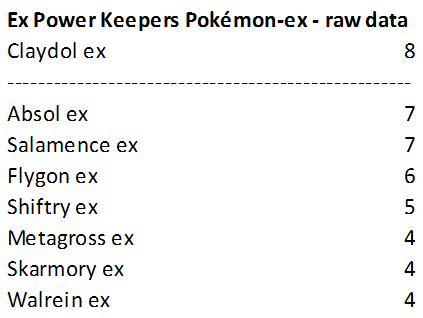
I have not yet looked at the commons or uncommons.
